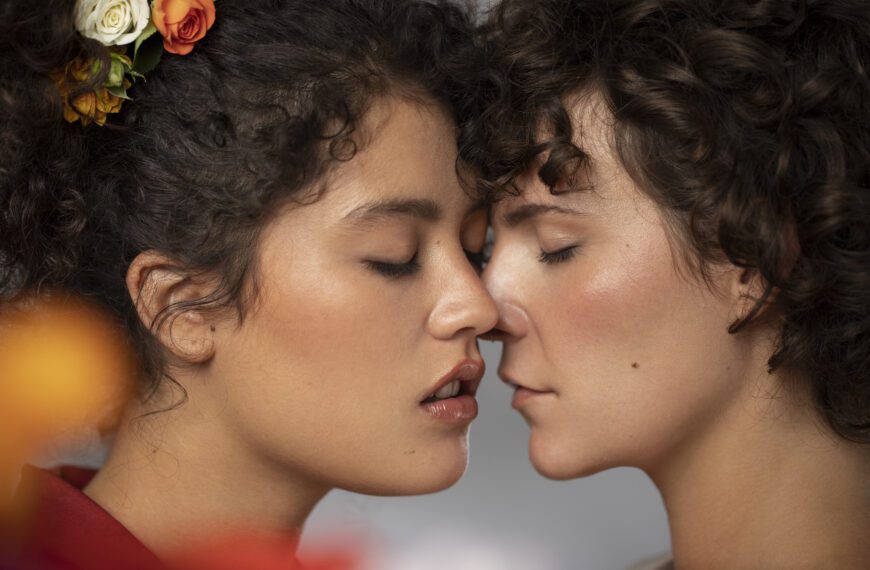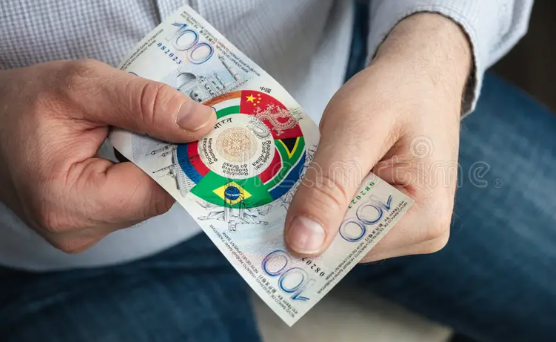
1. Introduction of same sex marriage in India
Same-sex marriage in India, commonly known as gay marriage, is the union of two individuals of the same legal sex. LGBTIQA+: lesbian, gay, bisexual, transgender, intersex, queer, and asexual. They have a flag that represents the LGBTIQA. The flag included eight colors. Since 1990, the initials and several of their popular forms have served as umbrella names for marginalized sexualities and gender identities. Pink for sex, red for life, orange for healing, yellow for sunlight, green for nature, turquoise for the arts, indigo for harmony, and violet for the soul. For years, proponents and opponents of same-sex marriage clashed on an emotional and political level. Although it is regulated by law and religion in many nations across the world, legal and societal responses frequently range from celebration to criminalization of the pair.
In a major decision in 2018, the Indian Supreme Court overturned colonial-era Section 377 of the Indian Penal Code, which criminalized homosexuality. This ruling was heralded as a significant step towards LGBTQ+ rights in India. Despite this legal milestone, India’s legislation does not address same-sex marriage.
As attitudes towards LGBTQ+ rights evolve globally and within India, there is ongoing debate and pressure on the Indian government and judiciary to address the issue of same-sex marriage in India. While progress has been made in terms of legal recognition and societal acceptance, there is still a long road ahead to achieve full equality for LGBTQ+ individuals in India, including the recognition of their right to marry.
2. Brief History of Same-sex marriage in India
Colonial Era: Under the British administration, the Indian Penal Code of 1860 was enacted, which included Section 377, which criminalized “unnatural offenses,” including gay conduct. This law stayed in effect for more than a century, adding to the stigma and prejudice against LGBTQ+ people.
Legal Challenges: Starting in the late twentieth century, LGBTQ+ activists and organizations in India began opposing Section 377 and lobbying for the decriminalization of homosexuality. The movement gained traction in the early 2000s, resulting in many judicial challenges and public efforts to abolish Section 377.
Landmark Supreme Court Decision: In Navtej Singh Johar v. Union of India, the Supreme Court of India issued a landmark decision declaring Section 377 unconstitutional on September 6, 2018. The court held that voluntary sexual actions between adults, regardless of gender or sexual orientation, cannot be considered unlawful.
Recognition of LGBTQ+ Rights: Recognition of LGBTQ+ Rights: The repeal of Section 377 was heralded as a landmark win for LGBTQ+ rights in India, representing a critical step towards decriminalization and public acceptance of homosexuality.
Current Status: Despite homosexuality being decriminalized, same-sex marriage is still illegal in India, according to my most recent update in January 2022. In India, no legislative or judicial action has been taken particularly to legalize same-sex marriage.
Before the establishment of colonial control. INDIA has its scripture that describes the practice of homosexuality and intercourse. The Kama Sutra, authored by Indian philosopher Vatsyayana around 400 BC, describes homosexuality in-depth, giving specific instructions on how to commit such activities. It refers to men having sex with men, women having intercourse with women, as well as bisexual, transgender, and intersex people.

3. Pre Independence:
- India has a complex cultural and religious past, including customs and ideas on sexuality and relationships. Some ancient Indian scriptures, such as the Kama Sutra, embrace same-sex desire and partnerships, albeit in a context that differs from modern understandings.
- Colonial Influence: The British colonial authority enforced Victorian-era moral standards and legislation, notably Section 377 of the Indian Penal Code, which criminalized “unnatural offenses,” such as gay activities. This colonial heritage heavily influenced views toward same-sex partnerships and established a legal system that stigmatized and marginalized LGBTQ+ people.
- Regional Variances: India’s pre-independence past is marked by regional and cultural variety, with each area having its customs, beliefs, and practices about sexuality and marriage. Some indigenous cultures and societies may have been more accepting of varied sexual orientations and relationships, but others adhered more strictly to traditional heterosexual standards.
Historical records from pre-independence India are sometimes incomplete and biased, with no direct proof or documentation of same-sex weddings or legal recognition of same-sex partnerships. The scarcity of evidence makes presenting a thorough picture of sentiments regarding same-sex marriage throughout this period difficult.
4. What was a section 377 of IPC?
“377. Unnatural offenses: Whoever voluntarily has carnal intercourse against the order of nature with any man, woman, or animal, shall be punished with imprisonment for life, or with imprisonment of either description for a term which may extend to ten years, and shall also be liable to fine.”
This provision of the IPC was enacted under British colonial control in India in 1860, reflecting Victorian-era moral standards and views towards sexuality. Section 377 was extensively construed to criminalize consensual sexual actions between people of the same gender, as well as other sexual acts considered “against the order of nature.”
For many years, Section 377 was utilized to discriminate against and punish LGBTQ+ people in India, causing widespread stigma, harassment, and human rights abuses. LGBTQ+ individuals and organizations in India advocated for the removal of Section 377, claiming that it infringed fundamental rights to privacy, equality, and non discrimination.
4.1 Post Independence:
The downturn of the Indian economy began in 1990-91, and it has since led to globalization and liberalization. Western influencers and NGOs advocated for equal rights for LGBTQ individuals.
Section 377 remained in place for over 60 years without a successful convention until 2001, when the Nazi Foundation and an NGO working with HIV patients filed a PIL challenging the clause as a violation of the fundamental right against discrimination enshrined in the Indian constitution.
Some history incidence took place during section 377 of IPC:
Several notable occurrences and milestones connected to LGBTQ+ rights and activism in India occurred when Section 377 of the Indian Penal Code (IPC) was in existence:
- Suresh Koushal v. Naz Foundation (2013): In 2013, the Supreme Court of India reversed the Delhi High Court’s decision in the Suresh Koushal v. Naz Foundation case. The Supreme Court maintained Section 377, saying it was up to the Indian Parliament to reform or remove the statute.
Public Outcry and Agitation: The Supreme Court’s decision to restore Section 377 in 2013 provoked considerable public outrage and revived agitation for LGBTQ+ rights in India. LGBTQ+ activists and supporters staged rallies, campaigns, and awareness-raising activities to oppose the decision and fight for LGBTQ+ rights.
Navtej Singh Johar vs Union of India (2018): On September 6, 2018, the Supreme Court of India issued a landmark decision in the Navtej Singh Johar v. Union of India case, striking down Section 377. The court ruled that consensual sexual actions between adults, regardless of gender or sexual orientation, could not be considered illegal under the Indian Constitution.
These instances and court fights helped shape the conversation on LGBTQ+ rights in India, eventually leading to the partial repeal of Section 377 in 2018. However, the fight for complete equality and acceptance for LGBTQ+ people in India continues, with initiatives to combat discrimination, secure legal recognition, and promote social inclusion.
Present situation in India:
In 2018, a five-judge panel of the Supreme Court of India, including Chief Justice Deepak Mishra, would issue a historical order. The ruling was based on a challenge filed by choreographer Navtej Singh Johar and 11 others challenging the constitutional validity of IPC 377.
On September 6, 2018, the Supreme Court ruled on clauses regarding consenting and same-sex marriages.
- According to the research, 3% of Indians identify as homosexual (including gay and lesbian), 9% as bisexual, 1% as pansexual, 2% asexual, and 69% as heterosexual (excluding “do not know and prefer not to know”).
- Although homosexual couples are no longer considered criminals per SC judgments, same-sex marriage remains illegal until 2023.
Present situation in other country:
- Homosexuality is decriminalized in 134 countries same sex marriage is legal in 34 of them.
- The USA is the first country who legalize same-sex marriage.
- The Netherlands is the first European country who legalize same-sex marriage.
- Canada is the first American country who legalize same-sex marriage.
- South Africa is the first African country who legalize same-sex marriage.
- Mexico is the first Latin American country that legalize same-sex marriage.
- Argentina is the first South American country who legalize same-sex marriage.
- Taiwan is the first Asian country who legalize same-sex marriage.
- Cuba, Newzealand, and Iceland are the countries that legalized same-sex marriage.
Argument in favour of same-sex marriage in India:
- SURROGACY AND ADOPTION: Opposing same sex-marriage in India by saying that it will end the human race is
unreasonable because adoption is a solution for queer couples who want to raise children. - MARRIAGE BEING A FUNDAMENTAL RIGHT: The demand for marriage equality comes from less economically privileged people who need legal protection. Claiming that it’s a matter for urban elites is deceptive. E.g. The story of Leela and Urmila, two policewomen who were suspended and locked up for getting married in 1987, shows the discrimination faced By LGBTQ people in society.
- Extend the provisions of the Special Marriage Act to encompass queer Indians by adopting gender-inclusive wording, such as “spouse” rather than “husband and wife.” This would provide them the right to marry without requiring a separate marriage act.
- The Supreme Court of India ruled that biological gender isn’t absolute and is more compelled than genitals. There isn’t an absolute idea of males and women.
Chief Justice of India (CJI) Dr Justice Dhananjaya Y Chandrachud made the following argument. - OUQUET OF RIGHTS DENIED: The LGBTQ community is denied significant legal benefits such as taxation, medical care, inheritance, and adoption due to their inability to marry legally. Marriage is a set of rights, not only about dignity.
- Human Dignity: In the case of NAVTEJ SINGH JOHAR VS.UNION OF INDIA, the Supreme Court upheld the right of same-sex couples to live a private life with dignity.
- INDIA’S CULTURE AND VALUE SYSTEM: Despite legal recognition, acceptance of same-sex legal relationships remains a difficulty in a culturally rich country with strong social norms and obligations.
The government should handle practical issues for same-sex couples, including shared bank accounts and rights to pensions and gratuities. - COHABITATION AS FUNDAMENTAL RIGHT: The CJI of India recognizes cohabitation as a basic right. And the government must formally recognize the social consequences of such a partnership. The court proposed using terms like contract and partnership instead of marriage. According to the government, there is no basic right to reorganize same-sex relationships into marriages.
The judges stated that such partnerships require acknowledgment to get certain advantages, but are not necessarily considered marriage. The CJI emphasized the need to ensure security and social welfare for individuals in such partnerships.

Arguments in Opposition of same-sex marriage in India:
- Gender Terms: Several believe that using terms like “mother and father” and “wife and husband” might be problematic in same-sex marriages.
- Adoption of children by LGBTQ couples can lead to societal discrimination, and stigma, and negatively affect the child’s emotional and psychological well-being in societies where LGBTQ acceptance is not universal.
- Religious Definition of Marriage: Marriage has historically been between men and women in many religions. The Special Marital Act of 1954, aimed to address limitations in religion and personal law, rather than creating a new marital institution.
- Legitimate Interest Of State: The state has a legitimate interest in regulating marriage and personal relationships through regulations like age of consent, forbidden degrees of marriage, and divorce. The right to marry is limited and regulated by state legislation. Individuals do not have complete control over their education, the same as how parents cannot. In 2017, the Supreme Court recognized privacy as a basic right and emphasized the need to protect one’s sexual orientation against discrimination.
- Right To Privacy: In 2017, the Supreme Court recognized the right to privacy as a basic right, stating that sexual orientation is a component of one’s identity that should not be discriminated against.
However, privacy exists, but it cannot be extended to marriage, which requires a public aspect. While consenting sexual relationships between adults are private, marriage is a public institution that cannot be disregarded. - The special marriage act legislation 1954 does not cover same-sex marriage since it covers the whole legislation, not just certain provisions.
RELGIOUS FACTOR:
9.1 Hinduism about same-sex marriage in India:
Hinduism, a complex and ancient religion, has a multifaceted approach to LGBT (lesbian, gay, bisexual, and transgender) concerns. Let’s get into some essential points:
Historical Context:
- In ancient India, Hinduism had no legal or moral limitations on homosexuality or transsexuality for the general public.
- However, many dharmic moral rules prevented the upper class and monks from engaging in sexual impropriety (both heterosexual and gay).
Third Gender:
- Hinduism recognizes a third gender, which is treated equally with the other genders.
- Ancient Hindu and Buddhist medical books attest to the presence of this third gender.
Mythological Representation:
- Traditional Hindu tales (such as the Vedas, Mahabharata, Ramayana, and Puranas) feature sex transformations, homoerotic interactions, and intersex or third-gender individuals.
Same-Sex Marriage:
- Traditional Hindu stories (such as the Vedas, Mahabharata, Ramayana, and Puranas) include sex changes, homoerotic relationships, and intersex or third-gender characters.
Legal Context:
- In 2009, the Delhi High Court legalized homosexuality in India, however, the Supreme Court later reversed the verdict.
Islam about same-sex in India:
Islam, like many other major religions, takes a firm position on same-sex marriage. It bans homosexuality and lesbianism as transgressions of Allah’s commandments. Islam emphasizes that same-sex marriage is a significant danger to human cultures and communities.
In Islamic teachings:
- Islam places a high value on marriage and family. The Quran emphasizes the formation of male and female couples as the basis for family groups. Marriage (nikah) is constantly defined as the union of a man and female.
- In Islam, physical closeness is considered an obligation within contractual marriages. It strongly opposes pre-marital and post-marital physical interactions, as well as physical relationships between members of the same gender.
Sikhism and Christianity regarding same-sex marriage in India:
1. Sikhism about same-sex marriage in India:
Historical Context: Sikhism contains no explicit teachings on homosexuality. The Guru Granth Sahib (Sikh sacred book) makes no explicit reference to heterosexuality, homosexuality, or bisexuality.
Universal Goal: Sikhs strive to have no hatred or hostility towards everyone, regardless of race, caste, color, creed, or gender.
Views on LGBT: Many Sikhs feel there is nothing wrong with being LGBT or supporting LGBT rights, such as same-sex marriage in India. Some preachers’ opinions in the Akal Takht (the Sikh authority in India) are challenged.
Anand Karaj: The Sikh ritual of union (Anand Karaj) may only take place between a man and a female in front of the Guru Granth Sahib at a Gurdwara.
2. Christianity about same-sex marriage in India:
- Varied Views: Christian denominations have diverse stances on same-sex marriage in India.
- Conservative Views: Some conservative Christian groups oppose same-sex marriage, citing religious scriptures and natural family order.
- Progressive Views: Other Christian communities support LGBT rights and advocate for inclusivity and acceptance.
Health Issues:
1. Negative Health Consequences:
- The Gay Lesbian Medical Association (GLMA) emphasizes the negative effects connected with same-sex marriage in India and sexual practice:
- Higher rates of HIV/AIDS
- Substance abuse
- Depression/anxiety
- Hepatitis
- Sexually transmitted illnesses (such as anal papilloma/HPV, gonorrhea, syphilis, and chlamydia)
- Certain cancers
- Alcohol abuse
- Tobacco use
- Eating disorders
2. Self-rated Health Changes:
- Individuals in same-sex partnerships may face a quicker deterioration in health owing to minority worry over their sexual identity.
3. Family Outcome Disparities:
- Sexual and gender minorities have a higher risk of health concerns.
- Although same-sex couples can raise children, the consequences of sexual minority households remain unknown.
Laws Changes Attitude Toward Same-Sex marriage in India:
- Same-sex marriage in India is not currently recognized. The country’s legal system does not recognize marital equality and its associated benefits, including inheritance, shared property ownership, and adoption rights.
- Following the decriminalization of same-sex marriage in India and the Repeal of 377, attitudes towards same-sex marriage in Indian couples have shifted, and many individuals who identify as homosexual have been accepted by families.
- Legalizing same-sex marriage in India increases the likelihood that society will accept it on a large scale, benefiting the homosexual community. (Some several rules and regulations differ from other personal laws.
There are four marriage acts in India:
- The Hindu Marriage Act, 1955.
- The Muslim Personal Law (Shariat) Application Act, 1937.
- Indian Christian Marriage Act 1872.
- The Parsi Marriage and Divorce Act, 1936.
- The SPECIAL MARRIAGE ACT of 1954 emphasizes the importance of personal law.
Uniform Civil Code for same-sex marriage:
- The Uniform Civil Code (UCC) of India seeks to provide a unified set of civil rules covering marriage, divorce, inheritance, and adoption for all people, regardless of caste, religion, or sexual orientation. However, the Law Commission of India’s study on the UCC excludes same-sex marriages. weddings of men and women will be included in the new UCC, but same-sex weddings will not be included.
Will the court provide a remedy to the LGBTQA+ community when the government implements rules for marriage, inheritance, and adoption regardless of sexual orientation?
Surrogacy regulation bill 2019:
Queer couples are denied not just the right to marry, but also the rights to adoption and child custody, which are still debated in society. In 2019, the government approved the Surrogacy (Regulation) Bill, which prohibited live-in and same-sex couples from hiring surrogates.
Conclusion
In conclusion, the debate surrounding same-sex marriage in India is multifaceted and dynamic. Despite progressive strides globally towards LGBTQ+ rights and marriage equality, India’s stance remains conservative and traditional. The legal recognition of same-sex marriage in India is currently nonexistent, with the government and judiciary showing hesitancy in addressing this issue head-on. This lack of legal recognition perpetuates discrimination and marginalization against the LGBTQ+ community, denying them basic human rights and the freedom to express their love and commitment openly.
This article explores the importance of same-sex marriage in India in today’s culture. It covers several causes and conditions to help readers comprehend the challenges experienced by LGBTQ individuals. LGBTQ is a broad term with historical references in scripture and writings. However, it is important to examine if engaging in such behaviors constitutes a sin. Although many people increasingly embrace LGBT individuals, many still view them as having a mental disease. Doctors believe that sexual orientation is not an illness that can be healed. Some doctors treat it like an illness and recommend neuron surgery and high doses of medications. The LGBTQ community needs education and government regulations to ensure proper care and protection, without harming any cultural or religious beliefs. and evaluate the significance of each facet in society. Same-sex marriage inspires others to believe in their future. Furthermore, it creates a more positive future for the LGBTQ community. This community has already faced enough discrimination.
Nevertheless, the road to legalizing same-sex marriage in India is paved with obstacles, including deeply ingrained cultural and religious beliefs, political resistance, and bureaucratic hurdles. While some progressive steps have been taken, such as the decriminalization of homosexuality in 2018 through the landmark Navtej Singh Johar v. Union of India Supreme Court verdict, the issue of marriage equality remains largely unaddressed.
Same-sex marriage in India offers other individuals hope that they too may have a future. Furthermore, it creates a more positive future for the LGBTQ community. This community has already endured enough prejudice. They should be entitled to marry anyone they want, regardless of gender or sex.
In conclusion, the journey towards same-sex marriage in India is ongoing and complex. It demands proactive engagement from all stakeholders – government, judiciary, civil society, and the broader community – to create a more inclusive and just society where love knows no bounds.
Author: Divya Sharma
Divya is a law undergraduate at S.S Jain Subodh Law Collage




Nice information you cover all topic great blog, I am very impressed with your work.
Thank you so much 🙏 sir .it means lot to me